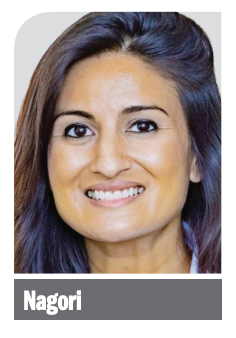Publication
Article
Digital Edition
Future looks promising for telemedicine
Author(s):
Amid pandemic, physicians and patients have embraced technology.


Reviewed by Saya Nagori, MD
The landscape in the telemedicine arena has changed markedly within a dramatically short period.
In 2015, telemedicine technology was relatively uncharted, as physicians were reluctant to engage and many states had unclear rules about its use.
Over the past year, the COVID-19 pandemic has significantly impacted the US healthcare landscape.
While it is too early to determine the long-term impact, the ophthalmology industry has seen proof of innovation and widespread changes in reimbursements and service modalities.
Related: Telemedicine ushers in new chapter in eye care
The big question was how telemedicine could mimic the in-person examination, according to Saya Nagori, MD, vice president of medical affairs and founder of SimpleHealth.com and owner of VisionMD.co.
In 2015, telemedicine faced legislative battles, regulatory hurdles, confusing/limited reimbursements, and low adoption rates by physicians and patients, Nagori said.
Now, there has been a major reversal. Since the onset of the COVID-19 pandemic, patients and physicians have embraced telemedicine, physicians have been receiving reimbursements since March 2020, and regulatory issues are no longer problematic.
“The biggest misconception holding physicians back is the notion that physicians must address every issue via telemedicine,” Nagori said.
Making the team approach work
Telemedicine seems tailor-made to replace in-person visits for patients needing chronic care; however, it is not as appropriate for acute care, Nagori said.
Related: Increasing number of Americans prefer telehealth, poll finds
Getting the clinic staff on board is one of the biggest challenges.
“When each member of the team can handle almost all of what is needed during a virtual examination, this will facilitate a seamless transition to telemedicine. Physicians need to help the team members understand what can and cannot be accomplished via telemedicine,” Nagori explained.
Examinations
Ocular pathologies that can be diagnosed and managed successfully via telemedicine include chalazion, stye, and lid lesions; episcleritis; dry eye; subconjunctival hemorrhages; ocular allergies; conjunctivitis; myopia, hyperopia, and astigmatism; and pterygium and pinguecula; in addition patients with acute angle closure and retinal detachment may be triaged.
After the COVID pandemic eases, telemedicine’s place in the practice will continue to be convenient for physicians working from home, and when patients are in the office or at a remote testing center.
Related: Adjusting ophthalmology practice to a pandemic
Innovations
Telehealth also lends itself to disease detection. NGoggle technology (Ngoggle Diagnostics) senses brain activity using electroencephalography (EEG) through neurostimulation and feedback.
The patient wears a headset with a virtual reality goggle that contains EEG sensors and custom optics that can measure disease progression remotely.
Felipe Medeiros, MD PhD, vice chairman of the Department of Ophthalmology at Duke University School of Medicine in Durham, North Carolina, and colleagues designed this innovative technology with the goal of measuring visual fields more often to prevent disease progress.
Amid the continuing challenges of telemedicine, it is vital to develop these developing technologies to provide the best care for patients.
Related: Home IOP monitoring may be aftereffect of COVID-19 pandemic
“The use of telemedicine is growing. While it currently has its limitations within ophthalmology, the use case scenarios will continue to expand with innovation and time,” Nagori concluded.
--
Saya Nagori, MD
e:saya.nagori@gmail.com
This article is adapted from Nagori’s presentation at the Ohio Ophthalmological Society’s 2021 virtual annual meeting. Nagori is a medical adviser to DOT Glasses.

Newsletter
Don’t miss out—get Ophthalmology Times updates on the latest clinical advancements and expert interviews, straight to your inbox.





